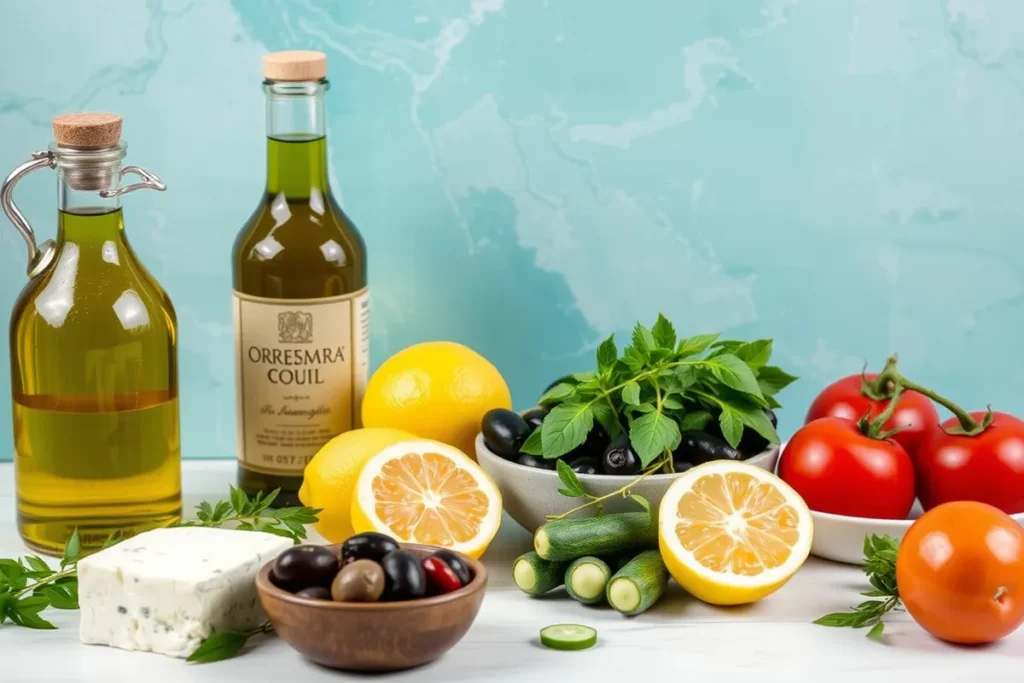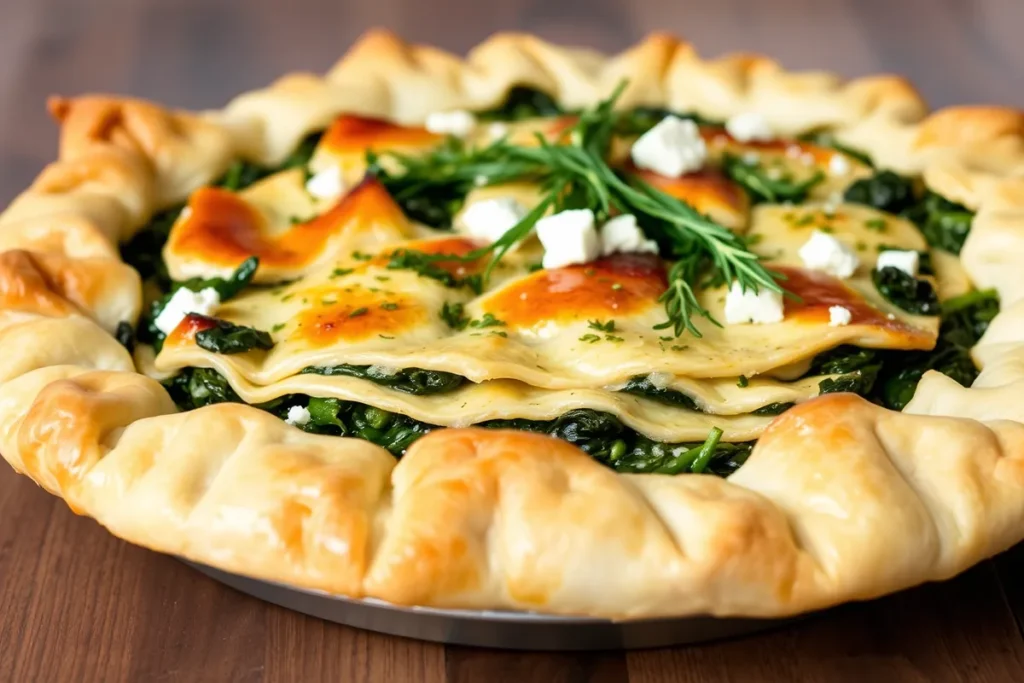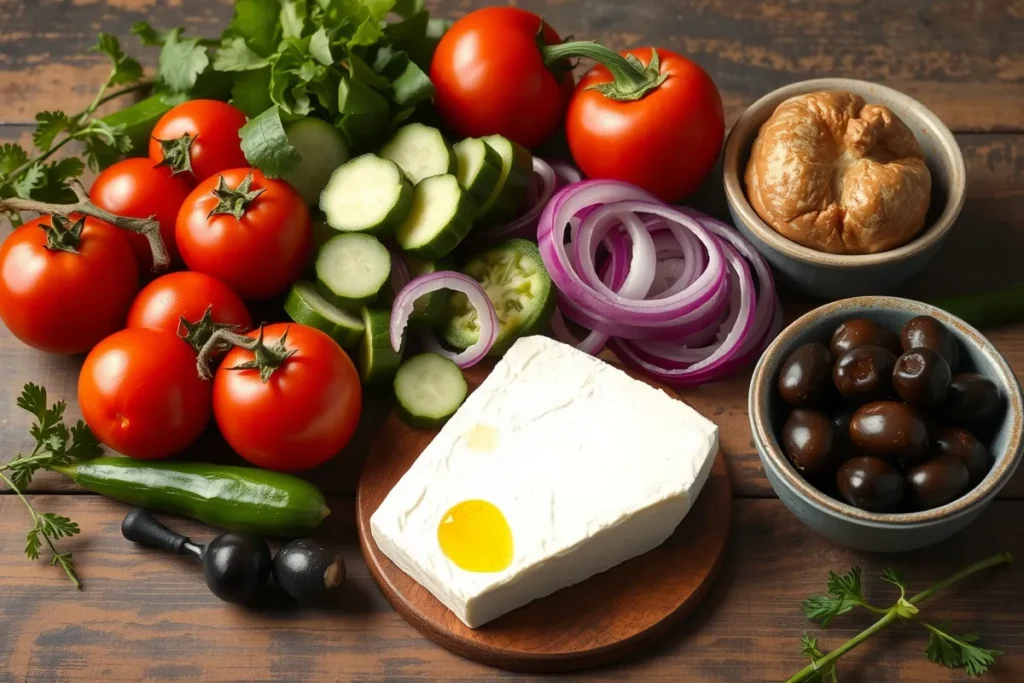Greek cuisine is a celebration of flavors, history, and health. Rooted in the Mediterranean diet, it reflects the country’s rich cultural heritage while offering a variety of dishes that cater to every palate. From iconic appetizers like spanakopita to hearty main courses such as moussaka and indulgent desserts like baklava, Greek recipes embody a balance of simplicity and sophistication. Whether you’re looking to explore traditional fare or create a Mediterranean-inspired meal, this article will guide you through the essentials of Greek cooking.
Understanding Greek Cuisine
Greek Cuisine: A Journey Through Flavor and Tradition

Greek recipes have long been celebrated for their ability to transform humble ingredients into extraordinary dishes. The heart of Greek cooking lies in its use of fresh produce, herbs, and spices, creating a symphony of taste that’s both vibrant and nourishing. Inspired by its geographic location and rich history, Greek cuisine is an amalgamation of influences from neighboring countries, yet it retains its unique identity.
The Role of Essential Ingredients in Greek Cooking
At the core of every Greek recipe is a reliance on fresh, high-quality ingredients. Staples like olive oil, known as “liquid gold,” are indispensable in Greek kitchens. Other key ingredients include feta cheese, Greek yogurt, Kalamata olives, and an assortment of fresh herbs such as oregano, dill, and mint. These elements not only enhance the flavor of dishes but also contribute to their nutritional value.
The Mediterranean Diet: A Health-Conscious Approach
Greek cuisine is often synonymous with the Mediterranean diet, renowned for its health benefits. This dietary pattern emphasizes plant-based foods, lean proteins like fish and poultry, and the generous use of olive oil, which is packed with antioxidants and healthy fats. Studies have shown that the Mediterranean diet can help reduce the risk of chronic illnesses, making Greek recipes an excellent choice for those seeking both flavor and wellness.
Cultural Significance of Greek Recipes
Food in Greece embodies connection, not just sustenance. Families and friends gather during meals to share stories and create lasting memories. Generations actively pass down many traditional Greek recipes, which symbolize love, tradition, and hospitality. Whether families host a wedding feast or enjoy a simple dinner, Greek food deeply intertwines with cultural celebrations.
Greek recipes are your gateway to exploring this wonderful culinary tradition. Whether you’re a seasoned cook or just starting out, the combination of fresh ingredients, rich flavors, and cultural stories behind each dish will leave you inspired to bring a piece of Greece to your table.
Traditional Greek Appetizers
A Taste of Tradition: Greek Appetizers That Delight
Greek appetizers, or meze, offer an inviting introduction to the vibrant flavors of the cuisine. These small plates are designed to be shared and savored, often served as a prelude to a meal or as part of a social gathering. Bursting with freshness and flavor, Greek appetizers make use of essential ingredients like olive oil, herbs, and creamy feta cheese, ensuring every bite is a testament to Greek culinary traditions.
Spanakopita: The Perfect Spinach Pie

Spanakopita is a beloved Greek dish known for its flaky, buttery layers of phyllo dough and a savory filling of spinach, feta cheese, onions, and fresh dill. This recipe is a shining example of how simple ingredients can combine to create something extraordinary. Traditionally baked in large trays and cut into squares or triangles, spanakopita is as versatile as it is delicious, often served as an appetizer or light meal.
Tzatziki: A Refreshing Yogurt and Cucumber Dip
No Greek spread is complete without tzatziki, a creamy dip that perfectly balances tanginess and freshness. Made with thick Greek yogurt, grated cucumber, garlic, olive oil, and fresh herbs like dill or mint, tzatziki is both light and flavorful. It’s a staple accompaniment to grilled dishes, pita bread, and vegetable platters, providing a cool contrast to bold flavors.
Dolmades: Stuffed Grape Leaves with a Twist
Dolmades, another iconic Greek appetizer, showcase the delicate artistry of Greek cooking. Cooks typically stuff tender grape leaves with a mixture of rice, pine nuts, and fresh herbs like parsley and mint, with some variations including ground meat. After rolling them, they simmer the dolmades in a flavorful broth with a hint of lemon, which creates their tangy finish. Served cold, these delights always please a crowd at any meze table.
Tiropita: A Golden Cheese Pie
Similar to spanakopita but with a focus on cheese, tiropita is another must-try Greek appetizer. Its creamy filling, made with a combination of feta and other cheeses, is encased in layers of crisp phyllo dough. With each bite offering a delightful crunch and a cheesy, melt-in-your-mouth center, tiropita pairs wonderfully with a fresh salad or a simple dip.
Htapodi: Grilled Octopus for Seafood Lovers
For seafood enthusiasts, htapodi, or grilled octopus, offers a quintessential Greek appetizer. Chefs marinate the octopus in olive oil, vinegar, and herbs before grilling it to perfection, achieving a tender yet smoky flavor. They often drizzle it with olive oil, sprinkle it with oregano, and serve it alongside a slice of lemon.
These appetizers exemplify the essence of Greek recipes: simple, wholesome ingredients brought to life with care and tradition. They’re not just starters; they’re a gateway to the heart and soul of Greek cuisine.
Classic Greek Salads
Greek Salads: Freshness in Every Bite
Greek salads are a celebration of simplicity and freshness, where every ingredient shines. They’re a staple of Greek cuisine, offering a refreshing contrast to rich appetizers and hearty main courses. Loaded with seasonal vegetables, herbs, and the unmistakable tang of feta cheese, Greek salads showcase the brilliance of Mediterranean cooking.
Horiatiki: The Quintessential Greek Village Salad

Horiatiki, often referred to as a “Greek village salad,” is as authentic as it gets. This vibrant dish features chunks of ripe tomatoes, crisp cucumbers, thinly sliced red onions, green peppers, and Kalamata olives, all generously topped with creamy feta cheese. A drizzle of extra virgin olive oil and a sprinkle of oregano complete this simple yet flavorful dish. Unlike many salads, horiatiki skips lettuce entirely, letting the vegetables and cheese take center stage.
Maroulosalata: A Crisp and Refreshing Lettuce Salad
For a lighter option, maroulosalata offers a delicate balance of flavors and textures. Made with thinly sliced romaine lettuce, fresh dill, and finely chopped green onions, it’s dressed with olive oil and freshly squeezed lemon juice. This minimalist salad pairs wonderfully with grilled dishes or as a palate-cleansing side.
Pantzarosalata: Earthy Beet Salad
Beets take the spotlight in pantzarosalata, a visually striking salad that combines boiled beet slices with a creamy dressing made from yogurt, garlic, and olive oil. Topped with crushed walnuts or fresh herbs, this salad is as nourishing as it is flavorful. Its natural sweetness pairs beautifully with the tangy yogurt dressing, making it a standout dish at any meal.
Dakos: A Cretan Salad With a Twist
Hailing from Crete, dakos is a unique salad that uses barley rusks as its base. These crunchy rusks are topped with grated tomatoes, crumbled feta or mizithra cheese, olives, and a drizzle of olive oil. Finished with oregano and capers, dakos offers a rustic charm that’s hard to resist. It’s a wonderful way to enjoy the flavors of Greece with a slightly different texture.
Why Greek Salads Are More Than a Side Dish
Greek salads aren’t just side dishes; they can be a complete meal on their own. With a balance of fresh vegetables, healthy fats, and protein-rich cheese, they’re both satisfying and nutritious. Plus, they’re endlessly customizable—add grilled chicken, shrimp, or even chickpeas to make them heartier.
Greek salads are a masterclass in how simple ingredients, when combined thoughtfully, can create something extraordinary. They’re a testament to the Greek philosophy of letting food speak for itself.
Hearty Greek Main Courses
Satisfying Greek Recipes for Every Occasion
Greek main courses are where tradition meets comfort, offering robust dishes that showcase the rich, savory side of the cuisine. Whether baked, grilled, or simmered, these dishes bring family and friends together, reflecting the importance of food in Greek culture. From creamy casseroles to spiced skewers, these recipes capture the heart and soul of Mediterranean cooking.
Moussaka: A Comforting Eggplant and Meat Casserole
One of Greece’s most iconic dishes, moussaka is a layered casserole that combines sautéed eggplant slices, a spiced meat sauce (often made with ground beef or lamb), and a rich, creamy béchamel topping. Baked until golden and bubbling, this dish is the epitome of Greek comfort food. Its harmonious blend of textures and flavors makes it a must-try for anyone exploring Greek recipes.
Souvlaki: Flavorful Grilled Meat Skewers
Souvlaki is a staple street food in Greece, but it’s also a beloved main course at home. Marinated in olive oil, garlic, lemon juice, and herbs, meat pieces (usually chicken or lamb) are skewered and grilled to perfection. Served with warm pita, fresh vegetables, and a dollop of tzatziki, it’s a simple yet flavorful dish that never fails to impress.
Gemista: Stuffed Vegetables Packed with Flavor
Gemista (or “stuffed vegetables”) is a vegetarian-friendly dish that’s as healthy as it is delicious. Tomatoes, bell peppers, zucchini, or eggplants are hollowed out and stuffed with a mixture of rice, onions, fresh herbs, and sometimes minced meat. Baked in a tomato-based sauce, gemista is a hearty and satisfying option that highlights the versatility of fresh produce in Greek cooking.
Pastitsio: The Greek Take on Lasagna
For pasta lovers, pastitsio offers a uniquely Greek twist on lasagna. This baked dish layers tubular pasta with a spiced ground meat sauce and a creamy béchamel topping. The result is a luscious, hearty casserole that’s perfect for gatherings or special occasions. The hint of cinnamon in the meat sauce gives pastitsio its distinctive Greek flavor.
Kleftiko: Slow-Cooked Tender Meat
Kleftiko is a traditional dish that involves slow-cooking lamb or chicken with vegetables and herbs, often wrapped in parchment paper to lock in flavors. The result is tender, flavorful meat that falls off the bone. This dish exemplifies the Greek love for simplicity and patience in cooking, ensuring every bite is worth the wait.
Vegetarian Main Courses: Revithokeftedes and Fasolada
For vegetarians, Greece offers delicious options like revithokeftedes (chickpea fritters) and fasolada (a white bean soup). Both dishes are hearty, flavorful, and packed with nutrients, showcasing the plant-based side of Greek cuisine.
Greek main courses are a testament to the art of balancing bold flavors with wholesome ingredients. Whether you’re serving up a classic casserole or skewering your way to perfection, these dishes bring the warmth and richness of Greece straight to your table.
Delightful Greek Desserts
Greek Desserts: Sweet Treats with a Rich History
Greek desserts are the perfect finale to a Mediterranean feast, offering a blend of sweetness, texture, and tradition. Rooted in history and made with simple yet flavorful ingredients, these treats often incorporate honey, nuts, and phyllo dough to create unforgettable flavors. From syrup-soaked pastries to creamy delights, Greek desserts are as diverse as they are delicious.
Baklava: A Honey-Soaked Masterpiece

Arguably the most famous Greek dessert, baklava features layers of flaky phyllo dough, finely chopped nuts (often walnuts or pistachios), and a drizzle of honey or sugar syrup. Bakers cook this sweet treat to golden perfection, creating a sticky, crunchy texture that delights fans across the globe. Although preparing it takes effort, the heavenly result makes it worthwhile.
Galaktoboureko: Custard-Filled Perfection
Galaktoboureko is a creamy custard pie encased in delicate layers of phyllo dough and soaked in a fragrant syrup. Made with semolina-based custard and infused with hints of vanilla or citrus, this dessert is rich, indulgent, and satisfying. Every bite offers a contrast between the crisp phyllo and the smooth, creamy filling.
Loukoumades: Greek-Style Doughnuts
Loukoumades are bite-sized doughnuts soaked in honey syrup and sprinkled with cinnamon or chopped nuts. Light and airy on the inside with a crispy exterior, they’re a fun and festive dessert often enjoyed at Greek celebrations. They’re also easy to share, making them a popular choice for parties and gatherings.
Kataifi: A Unique Take on Pastry
Kataifi offers another syrupy dessert similar to baklava, but with a twist. Instead of layering phyllo, chefs use shredded phyllo dough, which creates a unique, nest-like texture. They wrap the dough around a nut filling, bake it, and then drench it in syrup, creating a dessert that looks as beautiful as it tastes.
Rizogalo: Greek Rice Pudding
Rizogalo, or Greek rice pudding, combines rice, milk, sugar, and a touch of vanilla or cinnamon into a creamy dessert. Greek households often chill and serve this simple yet comforting dish. For those seeking a lighter dessert option, it offers a delightful choice.
Melomakarona: Honey-Soaked Cookies
Perfect for the holiday season, melomakarona are spiced cookies made with olive oil and soaked in honey syrup. Often topped with crushed walnuts, they offer a soft, melt-in-your-mouth texture and a warming flavor profile thanks to cinnamon, orange zest, and cloves.
Greek desserts are more than just sweet treats; they’re a reflection of Greece’s love for celebration and hospitality. Whether you prefer syrupy pastries or creamy puddings, these desserts promise to satisfy any sweet tooth while introducing you to the rich culinary traditions of Greece.
Greek Meze and Small Plates
The Art of Meze: Small Plates That Bring People Together
Meze, the Greek equivalent of tapas, are small plates meant for sharing, fostering a sense of togetherness and celebration. These dishes are not just appetizers but an integral part of Greek culinary culture. Perfectly balanced in flavor and texture, meze showcases the diversity of Greek recipes, offering something for every palate.
Keftedes: Flavorful Greek Meatballs
Keftedes are savory Greek meatballs, crispy on the outside and tender on the inside. Cooks prepare them by mixing ground beef or lamb with onions, breadcrumbs, herbs like parsley and mint, and a touch of garlic. They fry the meatballs until golden and serve them with a side of tzatziki. These juicy bites make a must-have addition to any meze platter.
Saganaki: The Golden Fried Cheese Dish
Named after the pan used to prepare it, saganaki offers a simple yet delightful dish of fried cheese, typically made with graviera or kefalotyri. Cooks lightly coat the cheese in flour and fry it until it turns golden brown, creating a crisp exterior and a gooey center. They often serve it with a squeeze of fresh lemon, making saganaki a crowd-pleaser for cheese lovers.
Fava: A Creamy Yellow Split Pea Dip
Fava is a smooth and flavorful dip made from yellow split peas, olive oil, onions, and lemon juice. Often garnished with capers, red onions, or a drizzle of olive oil, it’s a versatile dish that can be enjoyed with pita bread or fresh vegetables. Its earthy taste and creamy texture make it a staple in any Greek meze selection.
Kolokithokeftedes: Zucchini Fritters with Herbs
Kolokithokeftedes are delicious zucchini fritters that combine shredded zucchini with feta cheese, dill, and breadcrumbs. These crispy bites are lightly fried and served warm with a dollop of tzatziki or a simple yogurt dip. They’re a fantastic vegetarian option that highlights the flavors of fresh herbs and seasonal produce.
Melitzanosalata: Smoky Eggplant Dip
A smoky and creamy eggplant dip, melitzanosalata is made with roasted eggplant, garlic, olive oil, lemon juice, and parsley. It’s a versatile dish that pairs beautifully with warm pita bread. Its rich, deep flavors are a perfect addition to any meze spread, offering a taste of the Mediterranean.
Tirokafteri: A Spicy Cheese Spread
Tirokafteri is a zesty spread made from feta cheese blended with olive oil, roasted red peppers, and a touch of chili for heat. This creamy, tangy dish adds a bold kick to a meze platter and pairs well with bread, crackers, or vegetables.
Octopus Meze: A Seafood Favorite
Grilled octopus is a classic meze for seafood lovers. Marinated in olive oil, vinegar, and herbs, it’s grilled until tender and lightly charred. Served with a drizzle of olive oil and a sprinkle of oregano, it’s a dish that beautifully combines simplicity and sophistication.
Greek meze and small plates are more than just dishes; they’re an experience. With their vibrant flavors and variety, they encourage diners to slow down, share stories, and savor every bite. These small plates offer a window into the rich traditions of Greek cuisine, making any gathering a memorable one.
FAQs about Greek Recipes
What are the essential ingredients for Greek cooking?
Essential ingredients in Greek cooking include olive oil, feta cheese, Greek yogurt, fresh herbs like oregano and dill, lemons, and Kalamata olives. These staples are versatile and add depth to many dishes. For instance, olive oil enhances everything from salads to main courses, while feta cheese brings a tangy richness to recipes.
What makes the Mediterranean diet, including Greek cuisine, so healthy?
The Mediterranean diet focuses on fresh, plant-based ingredients, healthy fats from olive oil, and lean proteins. This combination can reduce risks of heart disease and other chronic illnesses. Additionally, the moderate use of spices and herbs adds flavor without relying on heavy salt or processed ingredients.
Can I make Greek recipes vegetarian or vegan?
Absolutely! Many Greek dishes are naturally vegetarian, such as spanakopita, gemista, and fava. For vegan options, you can skip dairy-based ingredients like feta or yogurt and replace them with plant-based alternatives. Transitioning these recipes is simple and doesn’t compromise flavor.
What is the difference between baklava and kataifi?
While both are syrupy desserts, baklava features layers of phyllo dough and chopped nuts, while kataifi creates a nest-like texture with shredded phyllo dough. Cooks sweeten both desserts with honey or syrup, but their textures and presentations highlight their unique appeal.
Can I prepare Greek recipes with everyday pantry items?
Yes, many Greek recipes rely on simple ingredients like olive oil, onions, garlic, rice, and tomatoes—items that most kitchens commonly stock. However, cooks can elevate the flavors significantly by adding authentic ingredients like feta, Greek yogurt, and Kalamata olives.
What’s the best way to serve Greek appetizers like tzatziki and dolmades?
Greek appetizers are best served family-style, allowing guests to sample a variety of dishes. Pair tzatziki with pita bread or fresh vegetables, and accompany dolmades with lemon wedges for a tangy twist. Sharing these appetizers creates a warm and inviting atmosphere.
How can I incorporate Greek salads into everyday meals?
Greek salads, like horiatiki or maroulosalata, are quick to prepare and pair well with grilled proteins or soups. You can also enjoy them as a light meal by adding chickpeas or grilled chicken. Their freshness makes them ideal for any occasion.
The Role of Greek Ingredients in Cooking
Essential Ingredients That Define Greek Cuisine
Greek recipes owe much of their flavor, texture, and charm to the high-quality ingredients used in every dish. From the golden elixir of olive oil to the creamy tang of feta cheese, these components not only enhance taste but also tell the story of Greece’s agricultural heritage. Understanding the role of these ingredients is key to mastering Greek cooking.
Olive Oil: The Heart of Greek Cooking
Dubbed “liquid gold” by Homer, olive oil is indispensable in Greek cuisine. Cold-pressed and rich in flavor, it’s used in nearly every dish—from salads and dips to main courses and desserts. Beyond its robust taste, olive oil is a source of healthy fats and antioxidants, contributing to the nutritional benefits of the Mediterranean diet.
Feta Cheese: Creamy and Tangy Goodness
Feta, Greece’s most famous cheese, is a crumbly, tangy delight made from sheep’s milk or a mix of sheep and goat’s milk. Its versatility allows it to shine in salads, pastries like spanakopita, and even as a standalone snack drizzled with olive oil and sprinkled with oregano. Feta adds a creamy texture and distinctive flavor to Greek recipes.
Greek Yogurt: A Creamy Staple
Thicker and creamier than regular yogurt, Greek yogurt is a vital ingredient in dishes like tzatziki and desserts such as rizogalo. Its high protein content and tangy taste make it a healthy addition to both sweet and savory recipes. It’s also a popular choice for marinades, lending a tenderizing effect to meats.
Herbs and Spices: The Fragrance of Greece
Herbs like oregano, dill, parsley, and mint play a pivotal role in Greek cooking. Oregano, often referred to as “the herb of joy,” is the cornerstone of many recipes, adding earthy and slightly peppery notes. Dill and mint are frequently used to brighten dishes, while cinnamon and cloves are surprising yet essential in savory dishes like pastitsio.
Kalamata Olives: A Briny Treat
Kalamata olives are a must in Greek kitchens, offering a rich, fruity flavor. These deep purple olives are often enjoyed whole, in salads like horiatiki, or as part of savory recipes. Their distinct taste comes from being cured in brine, a process that enhances their natural sweetness.
Lemons: A Burst of Citrus
Lemons are a staple in Greek recipes, adding brightness to everything from soups and stews to grilled meats and dips. Freshly squeezed lemon juice is often used to balance rich flavors and enhance the natural taste of other ingredients.
Phyllo Dough: The Foundation of Greek Pastries
This delicate, paper-thin dough is essential for many Greek desserts, including baklava and galaktoboureko. Phyllo’s crispy layers provide the perfect contrast to sweet, sticky fillings, making it a favorite ingredient in Greek households.
Seasonal Produce: The Freshness Factor
Greek recipes heavily rely on seasonal vegetables like tomatoes, cucumbers, eggplants, zucchini, and bell peppers. Fresh produce ensures that every dish bursts with flavor and nutritional value. Many traditional recipes, such as gemista and horiatiki, highlight the natural taste of these ingredients.
Greek cooking is a celebration of simple, fresh, and high-quality ingredients. Each one contributes its own unique flavor and nutritional value, making Greek recipes both healthy and delicious. By embracing these ingredients, you’re not just cooking; you’re connecting with a tradition that has stood the test of time.

